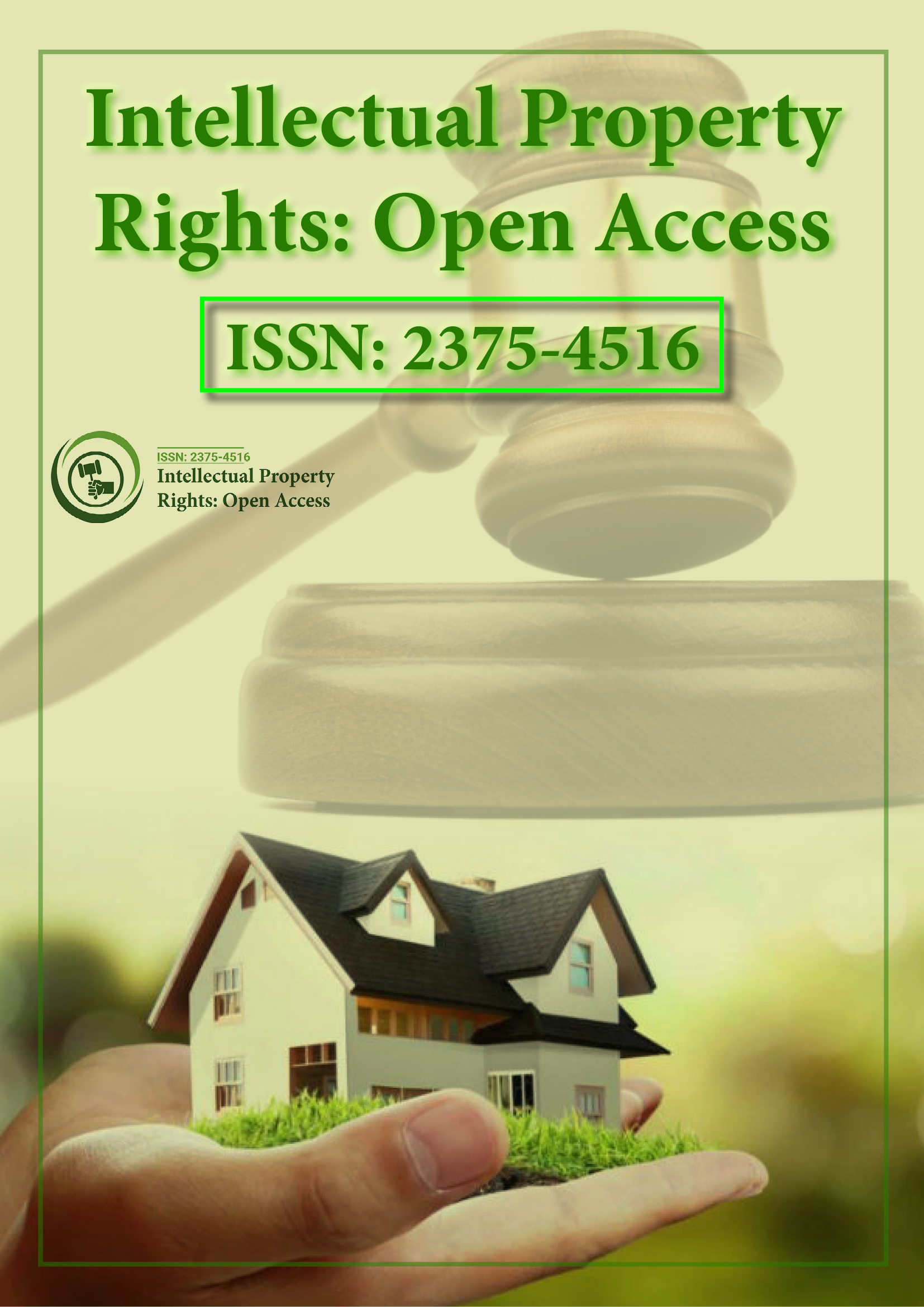Indexed In
- Open J Gate
- RefSeek
- Hamdard University
- EBSCO A-Z
- OCLC- WorldCat
- SWB online catalog
- Publons
Useful Links
Share This Page
Journal Flyer

Open Access Journals
- Agri and Aquaculture
- Biochemistry
- Bioinformatics & Systems Biology
- Business & Management
- Chemistry
- Clinical Sciences
- Engineering
- Food & Nutrition
- General Science
- Genetics & Molecular Biology
- Immunology & Microbiology
- Medical Sciences
- Neuroscience & Psychology
- Nursing & Health Care
- Pharmaceutical Sciences
Perspective - (2022) Volume 10, Issue 1
A Brief Note on Patents
Claud Ketz*Received: 04-Jan-2022, Manuscript No. IPR-2022-200; Editor assigned: 06-Jan-2022, Pre QC No. IPR-2022-200; Reviewed: 20-Jan-2022, QC No. IPR-2022-200; Revised: 24-Jan-2022, Manuscript No. IPR-2022-200; Published: 31-Jan-2022, DOI: 10.35248/2375-4516.22.10.200
Description
A patent is a kind of intellectual property that provides its owner the legal right to exclude others from making, using, or selling an invention for a limited period of time in exchange for publishing an enabling revelation of the invention. In most countries, patent rights fall under private law and therefore the patent holder should sue somebody infringing the patent in order to enforce their rights. In some industries patents are a vital kind of competitive advantage; in others they’re irrelevant.
The procedure for granting patents, requirements placed on the patentee, and therefore the extent of the exclusive rights vary widely between countries according to national laws and international agreements. Typically, however, a patent application includes one or more claims that define the scope of protection that’s being sought. A patent could include many claims, each of that defines a specific property right. These claims should meet various patentability requirements, which in the US include novelty, usefulness, and non-obviousness.
The term patent typically refers to the right granted to anyone who invents something new, helpful, and non-obvious. A patent is usually mentioned as a form of intellectual property right, an expression that is additionally used to refer to trademarks and copyrights, and that has proponents and detractors. Some other types of intellectual property rights are also known as patents in some jurisdictions: industrial design rights are known as design patents in the US, plant breeders’ rights are typically known as plant patents, and utility models and Gebrauchsmuster are generally known as petty patents or innovation patents.
The English patent system evolved from its early medieval origins into the first modern patent system that recognized intellectual property in order to stimulate invention; this was the crucial legal foundation upon that the industrial revolution might emerge and flourish. By the sixteenth century, the English Crown would routinely abuse the granting of letters patent for monopolies. The English legal system became the foundation for patent law in countries with a standard law heritage, as well as the United States, New Zealand, and Australia. In the 13 Colonies, inventors might get patents through petitions to a given colony’s legislature. A patent doesn’t provide a right to make use of or sell an invention. Rather, a patent provides, from a legal viewpoint, the right to exclude others from making, using, selling, offering for sale, or importing the patented invention for the term of the patent that is typically twenty years from the filing date subject to the payment of maintenance fees. From an economic and practical point of view, a patent is better and maybe more precisely considered conferring upon its owner “a right to try to exclude by asserting the patent in court”, for several granted patents turn out to be invalid once their proprietors attempt to assert them in court. A patent could be a limited property right the government provides inventors in exchange for their agreement to share details of their inventions with the public. Another different property right, it may be sold, licensed, mortgaged, assigned or transferred, given away, or just abandoned.
A patent, being an exclusionary right, doesn’t necessarily provide the patent owner the right to exploit the invention subject to the patent. As an example, many innovations are improvements of previous inventions that will still be covered by somebody else’s patent. If an inventor obtains a patent on improvements to an existing invention that is still under patent, they can only legally use the improved invention if the patent holder of the original invention provides permission, which they may refuse.
Some countries have “working provisions” that require the invention to be exploited in the jurisdiction it covers. Consequences of not an associate invention vary from one country to another, starting from revocation of the patent rights to the awarding of a compulsory license awarded by the courts to a party wishing to exploit a patented invention. The patentee has the opportunity to challenge the revocation of license, however is typically needed to provide evidence that the reasonable needs of the general public have been met by the working of the invention.
Citation: Ketz C (2022) A Brief Note on Patents. Intel Prop Rights. 10: 200.
Copyright: © 2022 Ketz C. This is an open-access article distributed under the terms of the Creative Commons Attribution License, which permits unrestricted use, distribution, and reproduction in any medium, provided the original author and source are credited.
